Are you ready to enhance your garden with the power of flowers?
Discover how these extraordinary blooms can work wonders for your plants by repelling pests and providing essential nourishment.
From warding off unwanted insects to boosting the overall health of your garden, these enchanting flowers have a lot to offer.
Quick Tips…
- Flowers like comfrey, borage, and French marigold repel pests and attract beneficial insects.
- Comfrey leaves provide natural fertilizer to nourish plants.
- Borage flowers deter insect pests and enhance the flavor of strawberries.
- French marigold attracts pest predators and adds color to the garden.
Benefits of Flowers in Pest Control
When considering pest control in your garden, incorporating flowers not only enhances the aesthetic appeal but also plays a crucial role in attracting beneficial insects that help manage pests effectively.
Flower aroma can act as a natural repellent against certain unwanted garden pests while attracting pollinators like bees and butterflies. Additionally, color therapy through vibrant flower hues can influence insect behavior, deterring harmful pests and encouraging the presence of beneficial ones.
By strategically planting a variety of flowers around your garden, such as marigolds, borage, and comfrey, you create a diverse ecosystem that supports natural pest control methods.
Embracing the beauty and functionality of flowers in your garden not only enriches the landscape but also fosters a harmonious environment where plants and beneficial insects thrive together.
Comfrey: Natural Pest Repellent
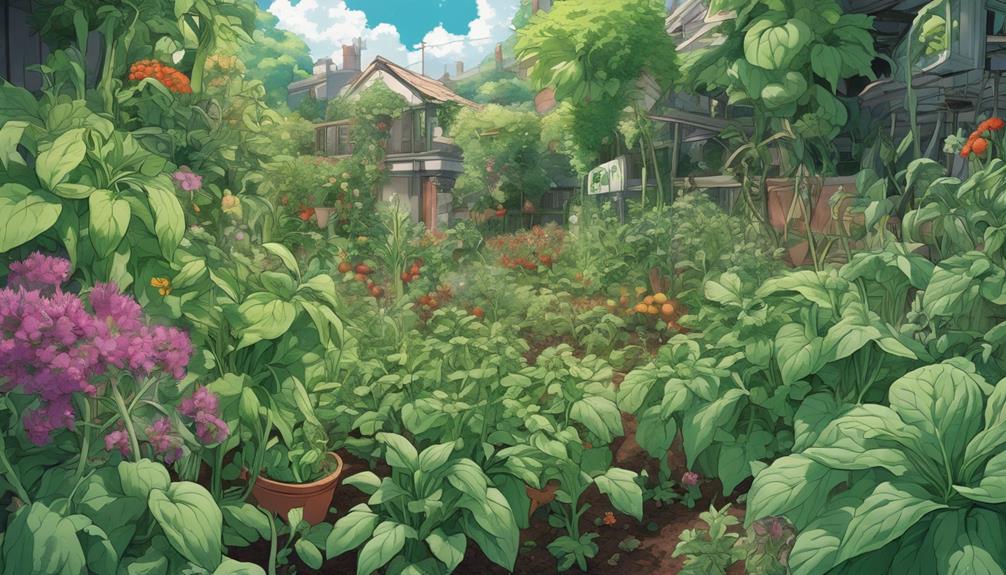
Comfrey serves as a potent natural pest repellent in the garden, offering a sustainable solution to manage unwanted insects effectively.
Its strong scent is known to deter certain pests such as slugs and snails. Additionally, comfrey can attract beneficial insects like ladybugs and lacewings, which can help control pest populations in the garden.
To use comfrey as a pest repellent, you can plant it around the perimeter of your garden or interplant it with other crops.
Not only does it have pest-repelling properties but comfrey also provides a myriad of benefits for your plants.
Its leaves are rich in nitrogen, potassium, and trace elements, making it a fantastic natural fertilizer. The fast-growing nature of comfrey, ensures quick results in your garden.
Utilize comfrey leaves as a powerful slow-release fertilizer by incorporating them as mulch, in potting mixes, or as planting hole liners. You can also make a comfrey tea spray by steeping comfrey leaves in water and then spraying the infused liquid on plants to deter pests.
Embracing comfrey not only helps in pest control but also enriches your soil, promoting healthier plant growth. Make comfrey a staple in your garden for a harmonious and thriving ecosystem.
Borage: Bee-Friendly Pest Control
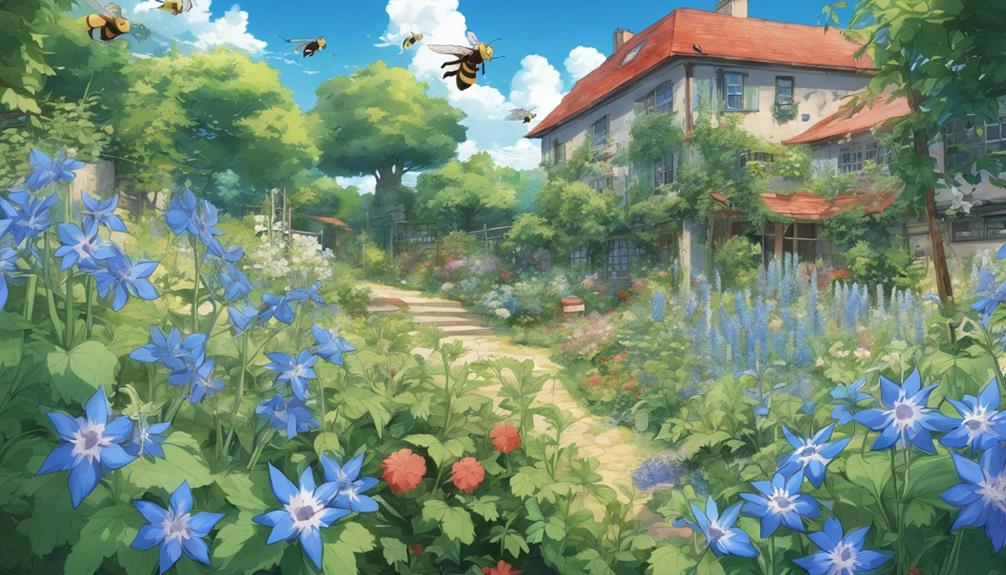
Planting borage in your garden can be a wonderful way to promote a healthy and thriving ecosystem. Borage, also known as starflower, is a beautiful flowering herb that not only adds aesthetic appeal to your garden but also attracts beneficial bees.
Bees are essential pollinators that play a crucial role in the reproduction of many plants, making them a valuable asset for any garden. By planting borage, you can help support bee populations and contribute to the overall health of your garden.
In addition to attracting bees, borage also serves as an effective natural pest control method. Borage plants produce compounds that repel certain pests, such as tomato hornworms and cabbage worms. By interplanting borage with other vegetables or herbs in your garden, you can help deter pests and reduce the need for chemical pesticides.
This herb is also a fantastic companion plant for tomatoes and cabbage family crops, enhancing their growth and flavor. By incorporating this versatile herb into your garden, you can create a more vibrant and balanced ecosystem while reducing the reliance on harmful chemicals.
French Marigold: Pest Predator
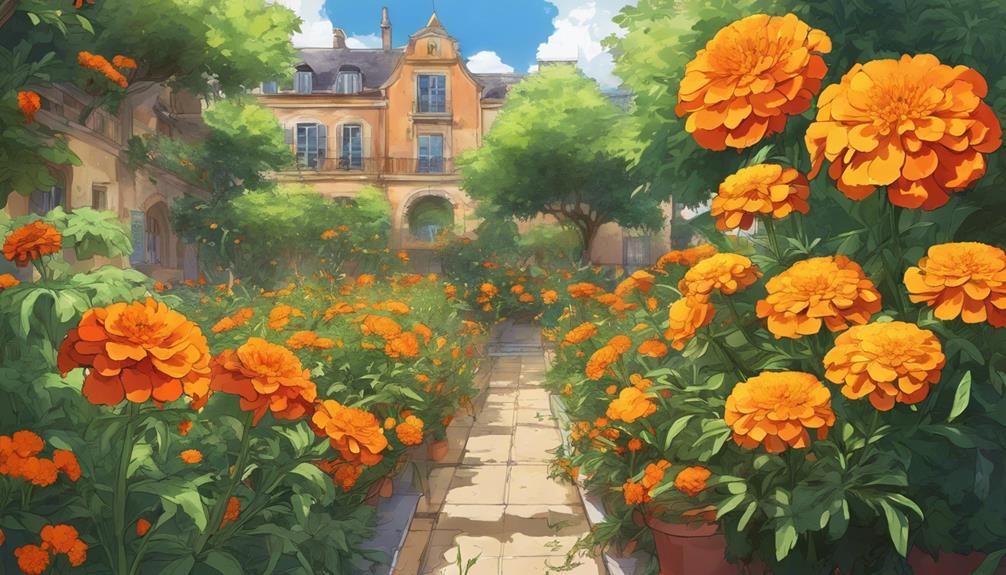
French Marigold, scientifically known as Tagetes patula, is a vibrant and charming annual plant that not only adds a pop of color to the garden but also serves a crucial role in pest management.
This frost-tender plant features a compact and neat habit, making it a popular choice for gardeners looking to add some visual appeal to their outdoor spaces.
French Marigolds typically grow to a height of about 6-12 inches and produce an abundance of small, daisy-like flowers in shades of yellow, orange, and red.
Beyond its ornamental value, French Marigold is highly valued for its ability to act as a natural pest predator in the garden ecosystem. The plant emits a strong fragrance that repels a variety of pests, including nematodes, aphids, whiteflies, and tomato hornworms.
Additionally, French Marigolds have been found to attract beneficial insects such as ladybugs and lacewings, which are voracious predators of common garden pests. This dynamic combination of pest-repelling properties and ability to attract beneficial insects makes French Marigolds a valuable companion plant in any garden.
In addition to their pest management benefits, French Marigolds are relatively low-maintenance plants that thrive in full sun and well-drained soil. They are easy to grow from seed and can be planted directly in the garden after the threat of frost has passed.
With their striking blooms, pest-repelling properties, and ability to support a healthy garden ecosystem, French Marigolds are a versatile and valuable addition to any garden landscape.
Alkanet: Pest-Attracting Flower
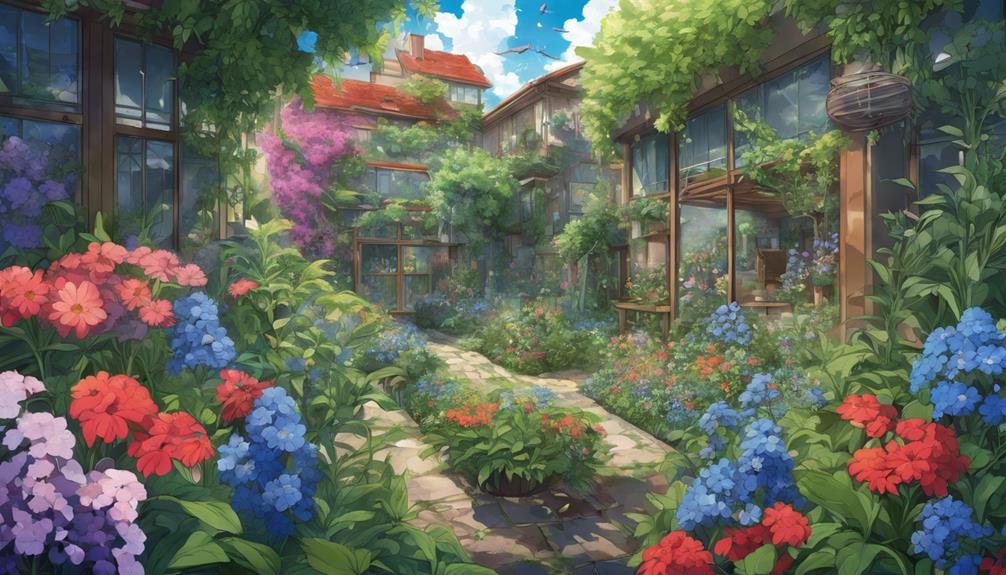
Alkanet, with its vibrant purple flowers, may be known as a pest-attracting flower, but its role in a garden ecosystem is invaluable. By attracting pests, such as aphids and whiteflies, alkanet acts as a natural trap crop, drawing these harmful insects away from other plants in the garden.
This not only helps protect more delicate plants from pest damage but also reduces the need for harmful chemical pesticides.
Interestingly, alkanet also attracts beneficial insects that play a vital role in maintaining a balanced garden ecosystem. These beneficial insects, including ladybugs, lacewings, and parasitic wasps, are natural predators of common garden pests.
By providing a food source through the pests attracted to alkanet, these beneficial insects are encouraged to stay in the garden, helping to keep pest populations in check without the need for human intervention.
In this way, alkanet serves as a dynamic and essential component of a diverse and thriving garden ecosystem. By fostering a healthy balance between pests and beneficial insects, alkanet contributes to the overall health and vitality of the garden, creating a more sustainable and harmonious environment for all its inhabitants.
Companion Planting for Pest Management
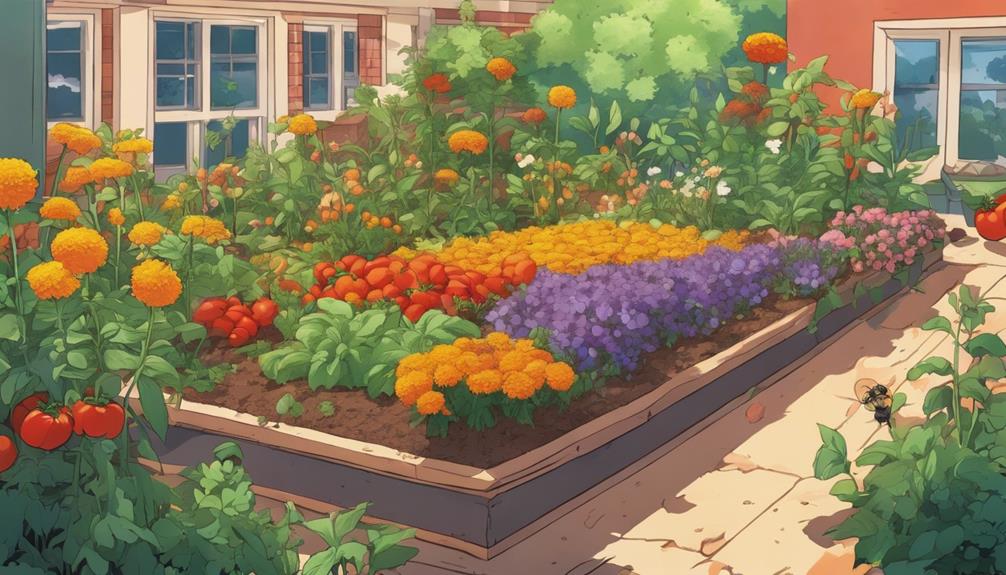
When considering companion planting for effective pest management in your garden, focus on selecting plant combinations that naturally deter pests and attract beneficial insects.
Here are three key points to keep in mind:
- Organic solutions: Utilize plants like marigolds, basil, and lavender that repel common garden pests without the need for harmful chemicals.
- Plant diversity: Mix different types of plants to create a balanced ecosystem that naturally controls pest populations and promotes overall garden health.
- Strategic pairings: Pair crops like tomatoes with basil to enhance each other’s growth and pest-repelling properties, creating a mutually beneficial environment for your plants.
Edible Flowers for Pest Control
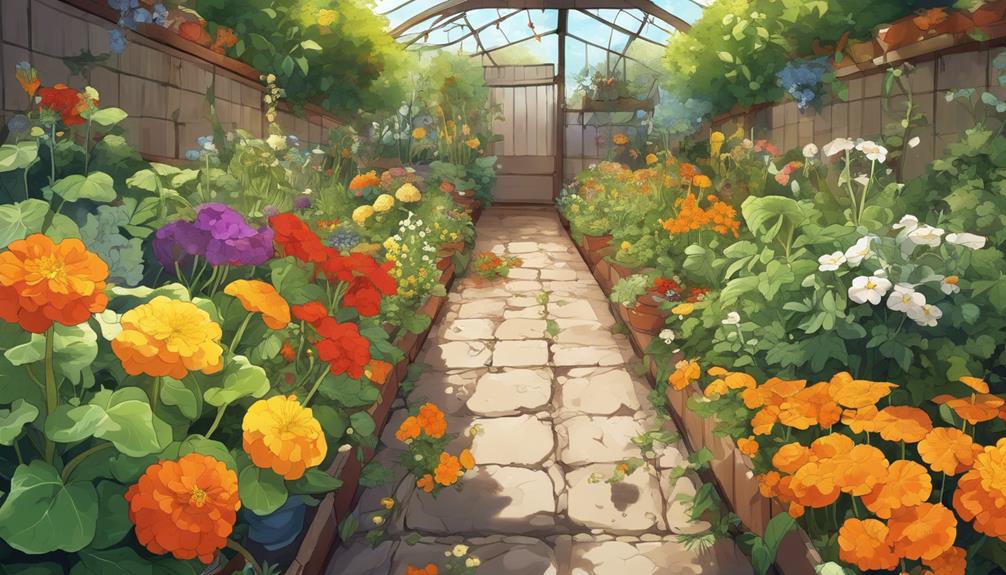
To enhance your garden’s pest control efforts while also adding a delightful touch, consider incorporating edible flowers that not only repel pests but also nourish your plants.
Edible flowers can play a dual role in your garden by beautifying your space and acting as natural pest deterrents. Check out the table below for some edible flower options that can help you keep pesky insects at bay while elevating your garden aesthetics.
| Edible Flowers | Pest-Repelling Properties | Best Growing Conditions |
|---|---|---|
| Nasturtium | Deters aphids, beetles, caterpillars | Full sun, well-drained soil |
| Calendula | Repels tomato hornworms, aphids | Sunny location, regular watering |
| Lavender | Keeps fleas, moths, mosquitoes away | Well-draining soil, full sun |
| Chives | Repels Japanese beetles, carrot rust flies | Sun to partial shade, moist soil |
Natural Defense Systems
As you cultivate your garden with flowers, you’re not only creating a visually stunning oasis but also building a natural defense system against pests.
From the pest-repelling properties of comfrey and French marigold to the bee-attracting benefits of borage, these flowers play a crucial role in maintaining a harmonious ecosystem.
By incorporating these blooms into your garden design and utilizing them as natural fertilizers, you can create a thriving and vibrant space that’s both beautiful and functional.

